Sustainable Recovery of Silver and Copper Photovoltaic Metals from Waste-Conductive Silver Pastes Using Thiosulfate Extraction and Ultraviolet Photolysis
Abstract
:1. Introduction
2. Experimental
2.1. Materials
2.2. Extraction Experiments
2.3. Recycling Experiments
2.4. Analytical Methods
3. Results and Discussion
3.1. Extraction of Ag and Cu from Conductive Ag Pastes Using Thiosulfate
3.1.1. Effects of Different Sodium Thiosulfate Concentrations
3.1.2. Effects of Different Solid-to-Liquid Ratios
3.1.3. Effects of Different Temperatures
3.2. UV Photolysis
3.2.1. Effects of Different Sodium Thiosulfate Concentrations
3.2.2. Effects of Different Solid-to-Liquid Ratios
3.2.3. Effects of Different Temperatures
3.3. Characterization of Photolytic Products
3.3.1. Phase of Photolytic Products
3.3.2. Morphology of Photolytic Products
3.3.3. Chemical Composition of Photolytic Products
4. Conclusions
Author Contributions
Funding
Data Availability Statement
Acknowledgments
Conflicts of Interest
References
- Lingling, Z.; Yangyang, Y.; Ning, W.; Mingli, L.; Shaomin, S.; Wei, B.; Choi, M.M.F. Sulfur-doped graphitic carbon nitride nanosheets as a sensitive fluorescent probe for detecting environmental and intracellular Ag. Methods Appl. Fluoresc. 2022, 10, 045001. [Google Scholar]
- Wan, A.B.; Kukjoo, K.; Mijung, K.; So-Yun, K.; Seung-Hyun, H.; Jang-Ung, P. Direct printing of reduced graphene oxide on planar or highly curved surfaces with high resolutions using electrohydrodynamics. Small 2015, 11, 2263–2268. [Google Scholar]
- Michael, G.; Alexander, K.; Florentina, M.C.; Florin, A.D.; Shlomo, M. Conductive inks with a “built-in” mechanism that enables sintering at room temperature. ACS Nano 2011, 5, 3354–3359. [Google Scholar]
- Huang, G.-L.; Chiu, P.-H.; Fujino, M.; Song, J.-M. Interconnect Fabrication on Polymer Substrate using Submicron/Nano Silver Particles with the Assistance of Low-Density Irradiations. JOM 2019, 71, 3057–3065. [Google Scholar] [CrossRef]
- Xiu, F.-R.; Qi, Y.; Zhang, F.-S. Leaching of Au, Ag, and Pd from waste printed circuit boards of mobile phone by iodide lixiviant after supercritical water pre-treatment. Waste Manag. 2015, 41, 134–141. [Google Scholar] [CrossRef] [PubMed]
- Sun, Z.; Xiao, Y.; Sietsma, J.; Agterhuis, H.; Yang, Y. A Cleaner Process for Selective Recovery of Valuable Metals from Electronic Waste of Complex Mixtures of End-of-Life Electronic Products. Environ. Sci. Technol. 2015, 49, 7981–7988. [Google Scholar] [CrossRef] [PubMed]
- Click, N.; Teknetzi, I.; Tam, E.P.L.; Tao, M.; Ebin, B. Innovative recycling of high purity silver from silicon solar cells by acid leaching and ultrasonication. Sol. Energy Mater. Sol. Cells 2024, 270, 112834. [Google Scholar] [CrossRef]
- Abdel-Aal, E.A.; Farghaly, F.E. Preparation of silver powders in micron size from used photographic films via leaching-cementation technique. Powder Technol. 2007, 178, 51–55. [Google Scholar] [CrossRef]
- Petter, P.M.H.; Veit, H.M.; Bernardes, A.M. Evaluation of gold and silver leaching from printed circuit board of cellphones. Waste Manag. 2014, 34, 475–482. [Google Scholar] [CrossRef]
- Joda, N.N.; Rashchi, F. Recovery of ultra fine grained silver and copper from PC board scraps. Sep. Purif. Technol. 2012, 92, 36–42. [Google Scholar] [CrossRef]
- Jadhao, P.R.; Ahmad, E.; Pant, K.K.; Nigam, K.D.P. Advancements in the field of electronic waste Recycling: Critical assessment of chemical route for generation of energy and valuable products coupled with metal recovery. Sep. Purif. Technol. 2022, 289, 120773. [Google Scholar] [CrossRef]
- Blumbergs, E.; Shishkin, A.; Markus, K.; Serga, V.; Goljandin, D.; Klauson, A.; Abramovskis, V.; Baronins, J.; Zarkov, A.; Pankratov, V. Economic Aspects of Mechanical Pre-Treatment’s Role in Precious Metals Recovery from Electronic Waste. Metals 2024, 14, 95. [Google Scholar] [CrossRef]
- Schwartz, E.; He, H.; Frost, K.; Nguyen, B.H.; Ogunseitan, O.A.; Schoenung, J.M. Comparative life cycle assessment of copper and gold recovery from waste printed circuit boards: Pyrometallurgy, chemical leaching and bioleaching. J. Hazard. Mater. 2024, 473, 134545. [Google Scholar] [CrossRef]
- Adetunji, A.I.; Oberholster, P.J.; Erasmus, M. Bioleaching of Metals from E-Waste Using Microorganisms: A Review. Minerals 2023, 13, 828. [Google Scholar] [CrossRef]
- Deblina, D.; Rahul, R.; Srinivas, G.L.K.; Debajyoti, K.; Pooja, S.; Mamta, T.; Sunil, K. A review on recovery processes of metals from E-waste: A green perspective. Sci. Total Environ. 2022, 859, 160391. [Google Scholar]
- Alvarado-Macías, G.; Fuentes-Aceituno, J.C.; Nava-Alonso, F. Silver leaching with the thiosulfate-nitrite-sulfite-copper alternative system. Hydrometallurgy 2015, 152, 120–128. [Google Scholar] [CrossRef]
- Ficeriová, J.; Baláž, P.; Gock, E. Leaching of gold, silver and accompanying metals from circuit boards (PCBs) waste. Acta Montan. Slovaca 2011, 16, 128–131. [Google Scholar]
- Cui, Y.; Tong, X.; Lopez-Valdivieso, A. Silver sulfide leaching with a copper-thiosulfate solution in the absence of ammonia. Rare Met. 2011, 30, 105–109. [Google Scholar] [CrossRef]
- Kumari, S.; Panda, R.; Prasad, R.; Alorro, R.D.; Jha, M.K. Sustainable Process to Recover Metals from Waste PCBs Using Physical Pre-Treatment and Hydrometallurgical Techniques. Sustainability 2024, 16, 418. [Google Scholar] [CrossRef]
- Graham, J.S.; Woodcock, J.T. Cyanide and other lixiviant leaching systems for gold with some practical applications. Miner. Process. Extr. Metall. Rev. 1995, 14, 193–247. [Google Scholar]
- Zhang, G.; Hou, L.; Chen, P.; Zhang, Q.; Chen, Y.; Zainiddinovich, N.Z.; Wu, C.; Alejandro, L.V.; Jia, F. Efficient and stable leaching of gold in a novel ethydiaminedhephen acetic-thiosulfate system. Miner. Eng. 2024, 209, 108639. [Google Scholar] [CrossRef]
- Nan, C.J.; Feng, X.; Wei, W.; Yan, F.; Jian, W.; Bin, X. Leaching of silver sulfide with copper sulfate-tartrate-thiosulfate solutions. J. Cent. South Univ. 2023, 30, 677–690. [Google Scholar]
- Ke, L.; Qian, L.; Yan, Z.; Yongbin, Y.; Tao, J. Effect of metal ions on gold adsorption onto activated carbon in the acidic thiourea solution: Experiment study and DFT calculation. J. Mol. Liq. 2023, 387, 122691. [Google Scholar]
- Tanısalı, E.; Özer, M.; Burat, F. Precious Metals Recovery from Waste Printed Circuit Boards by Gravity Separation and Leaching. Miner. Process. Extr. Metall. Rev. 2020, 42, 24–37. [Google Scholar] [CrossRef]
- Liu, Y.; Xu, Z.M.; Song, Q.M. Selective Extraction of Silver and Palladium in Leachate Based on EDTA Complexation: Electrodeposition, Nucleation Mechanism, and Kinetic Analysis. Acs Sustain. Chem. Eng. 2022, 10, 16647–16656. [Google Scholar] [CrossRef]
- Lampinen, M.; Laari, A.; Turunen, I. Ammoniacal thiosulfate leaching of pressure oxidized sulfide gold concentrate with low reagent consumption. Hydrometallurgy 2015, 151, 1–9. [Google Scholar] [CrossRef]
- Bozejewicz, D.; Kaczorowska, M.A.; Witt, K. Recent advances in the recovery of precious metals (Au, Ag, Pd) from acidic and WEEE solutions by solvent extraction and polymer inclusion membrane processes-a mini-review. Desalination Water Treat. 2022, 246, 12–24. [Google Scholar] [CrossRef]
- Seyed, H.B.; Shahram, R.; Ahmad, A.A. Study of silver extraction from Ag2S containing concentrate in the presence of copper sulfate, sodium thiosulfate, sodium metabisulfite, and ascorbic acid. Miner. Eng. 2022, 183, 107607. [Google Scholar]
- Khaobang, C.; Kathongthung, N.; Phitsuwan, P.; Sitthichirachat, P.; Wibowo, H.; Areeprasert, C. In-situ adsorptive pyrolysis of e-waste using coal and rice husk fly ash as alternative adsorbents for energy and precious metal recovery by solvent extraction. J. Anal. Appl. Pyrolysis 2024, 179, 106465. [Google Scholar] [CrossRef]
- Han, C.; Wang, G.; Zou, M.; Shi, C. Separation of Ag and Cu from Their Aqueous Thiosulfate Complexes by UV-C Irradiation. Metals 2019, 9, 1178. [Google Scholar] [CrossRef]
- Wang, W.; Han, C.; Xie, F. Efficient mercury recovery from mercuric-thiosulfate solutions by ultraviolet photolysis. Environ. Chem. Lett. 2018, 16, 1049–1054. [Google Scholar] [CrossRef]
- Cai, X. Mechanistic Study of Zinc Replacement of Silver in Ammonia-Free Thiosulfate Precious Liquid. Master’s Thesis, Kunming University of Science and Technology, Kunming, China, 2021. [Google Scholar]
- Zhu, Y. The Study on Wet-Efficient Extracting Silver from Components of Waste Mobile Phones. Master’s Thesis, South China University of Technology, Guangzhou, China, 2017. [Google Scholar]
- Han, C.; Wang, G.; Cheng, C.; Shi, C.; Yang, Y.; Zou, M. A kinetic and mechanism study of silver-thiosulfate complex photolysis by UV-C irradiation. Hydrometallurgy 2020, 191, 105212. [Google Scholar] [CrossRef]
- Egorov, N.B. Investigation of Lead Thiosulfate Photolysis in Aqueous Solutions. High Energy Chem. 2014, 48, 37–41. [Google Scholar] [CrossRef]
- Egorov, N.B. A study of photolysis products of aqueous Na6[Pb(S2O3)4] solutions. High Energy Chem. 2016, 50, 311–314. [Google Scholar] [CrossRef]
- Alexander, R.; Maxim, L.; Yuri, M. X-ray Photoelectron Spectroscopy (XPS) Study of the Products Formed on Sulfide Minerals Upon the Interaction with Aqueous Platinum (IV) Chloride Complexes. Minerals 2018, 8, 578. [Google Scholar] [CrossRef]
- Buckley, A.N.; Woods, R. Identifying chemisorption in the interaction of thiol collectors with sulfide minerals by XPS: Adsorption of xanthate on silver and silver sulfide. Colloids Surf. A Physicochem. Eng. Asp. 1995, 104, 295–305. [Google Scholar] [CrossRef]
- Zhang, Y.; Xu, B.; Zheng, Y.; Li, Q.; Yang, Y.; Liu, X.; Jiang, T.; Lyu, X. Hexaamminecobalt(III) catalyzed thiosulfate leaching of gold from a concentrate calcine and gold recovery from its pregnant leach solution via resin adsorption. Miner. Eng. 2021, 171, 107079. [Google Scholar] [CrossRef]
- Terzyk, A.P. The influence of activated carbon surface chemical composition on the adsorption of acetaminophen (paracetamol) in vitro: The temperature dependence of adsorption at the neutral pH. Colloids Surf. A Physicochem. Eng. Asp. 2001, 177, 23–45. [Google Scholar] [CrossRef]
- Terzyk, A.P.; Rychlicki, G. The influence of activated carbon surface chemical composition on the adsorption of acetaminophen (paracetamol) in vitro: Part II. TG, FTIR, and XPS analysis of carbons and the temperature dependence of adsorption kinetics at the neutral pH. Colloids Surf. A Physicochem. Eng. Asp. 2000, 163, 135–150. [Google Scholar] [CrossRef]
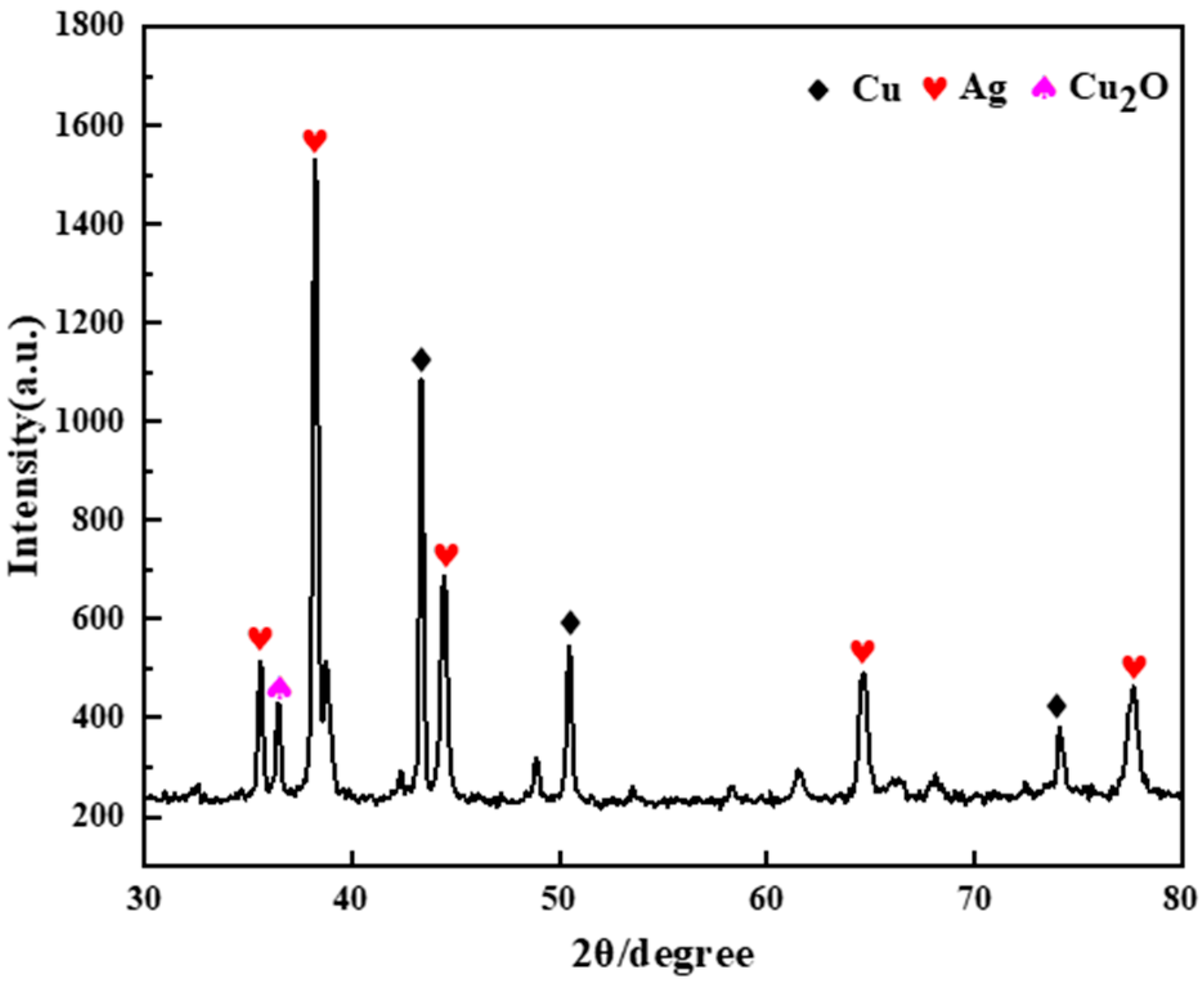


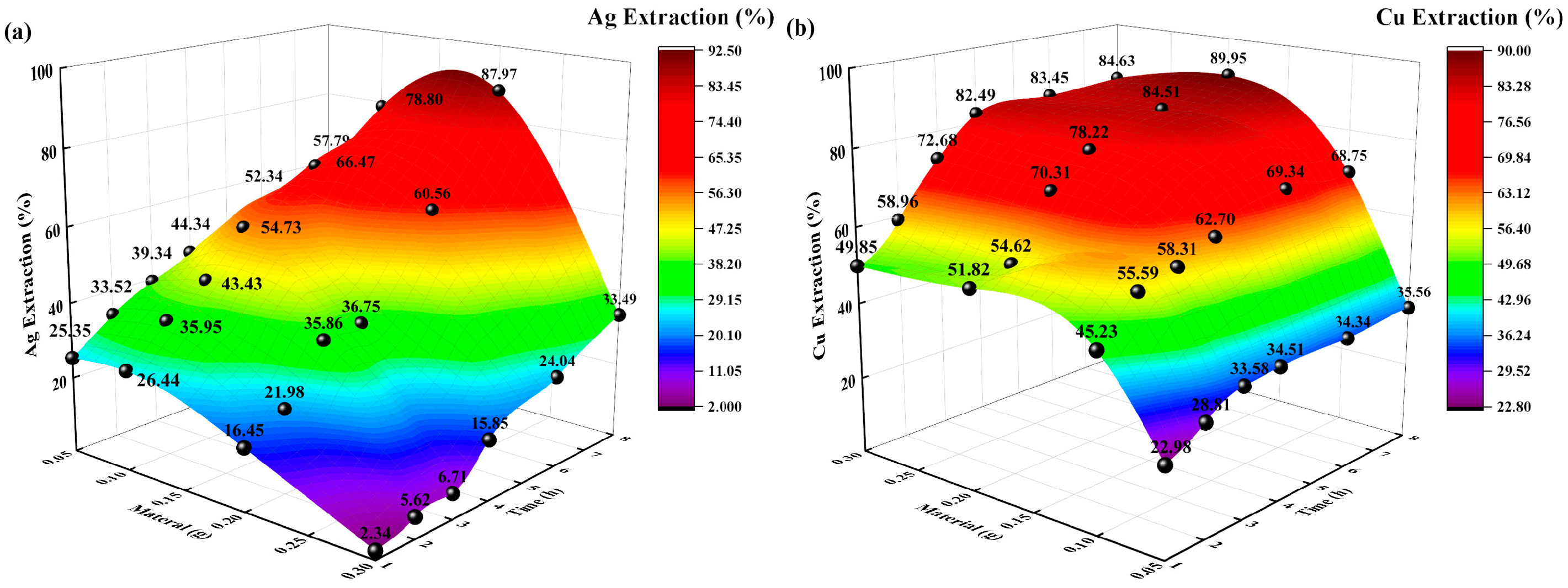
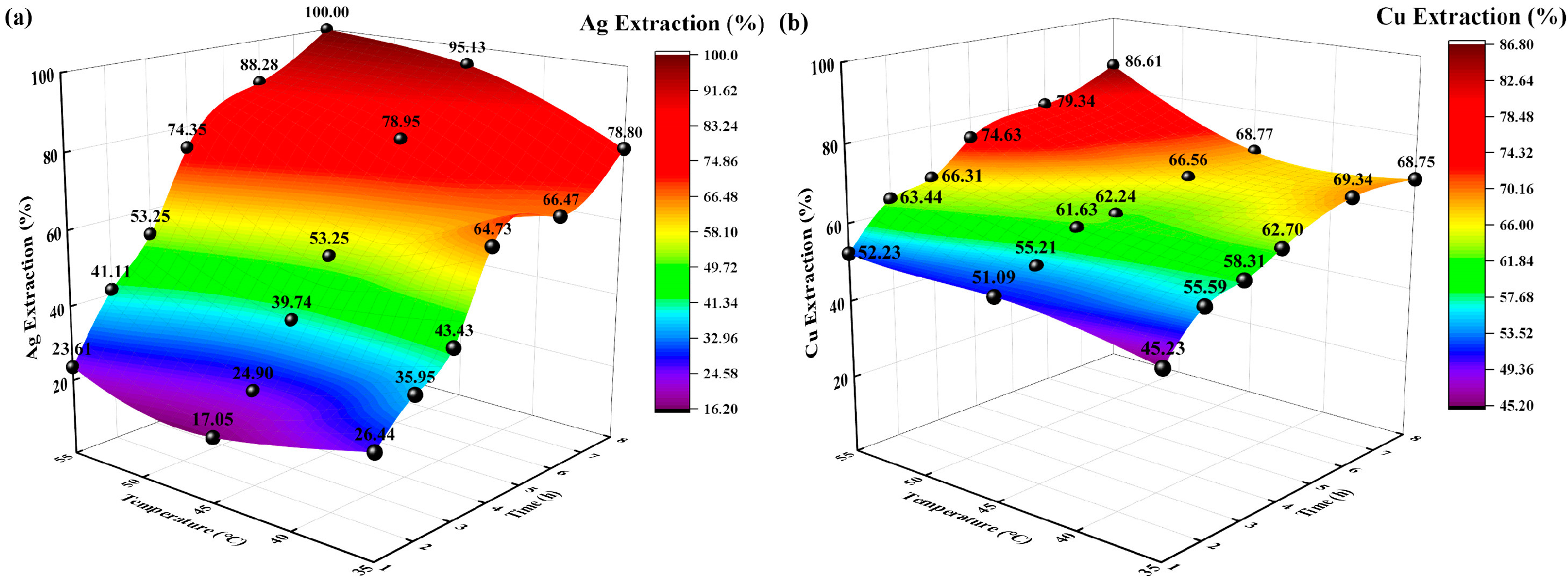



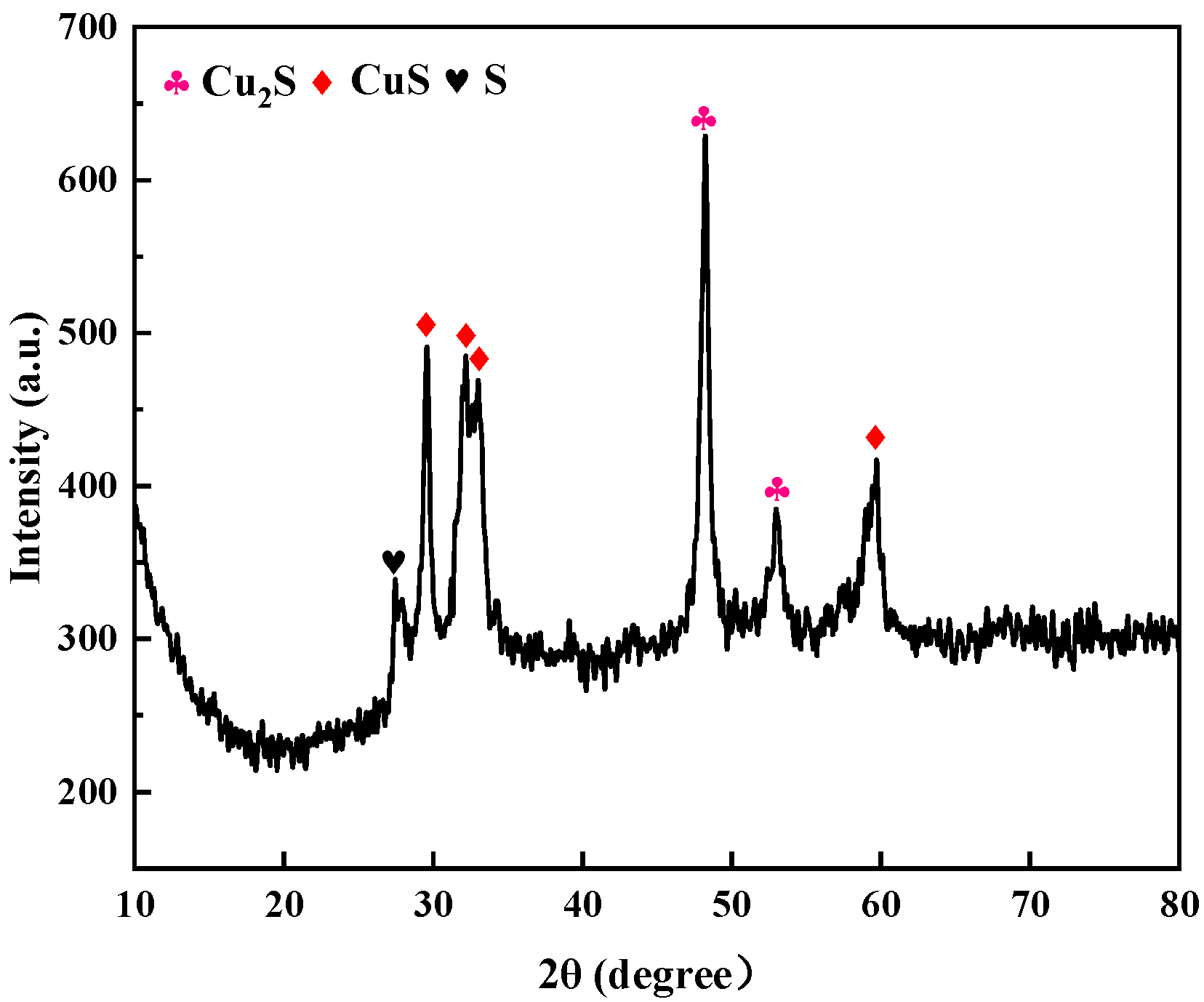
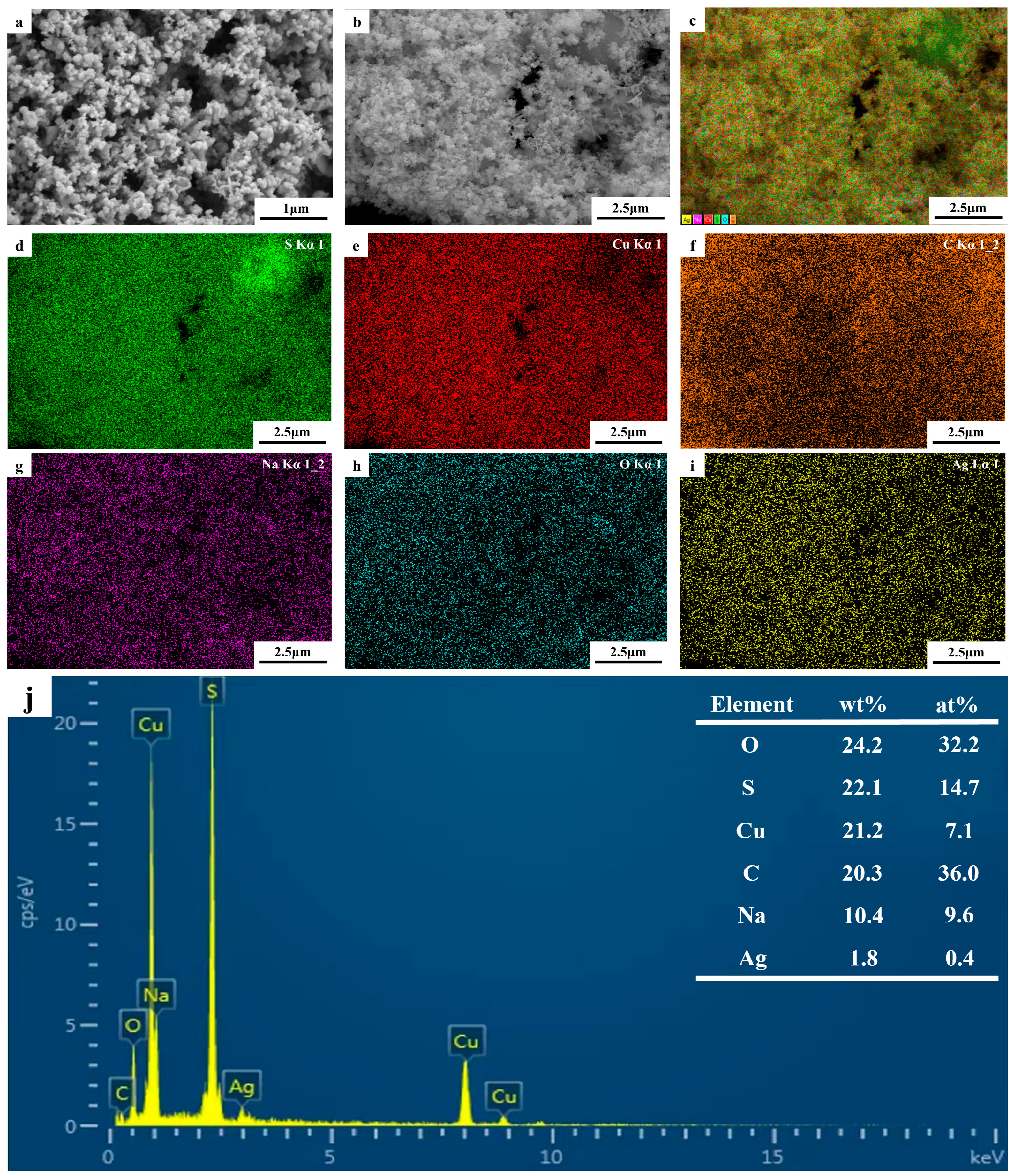
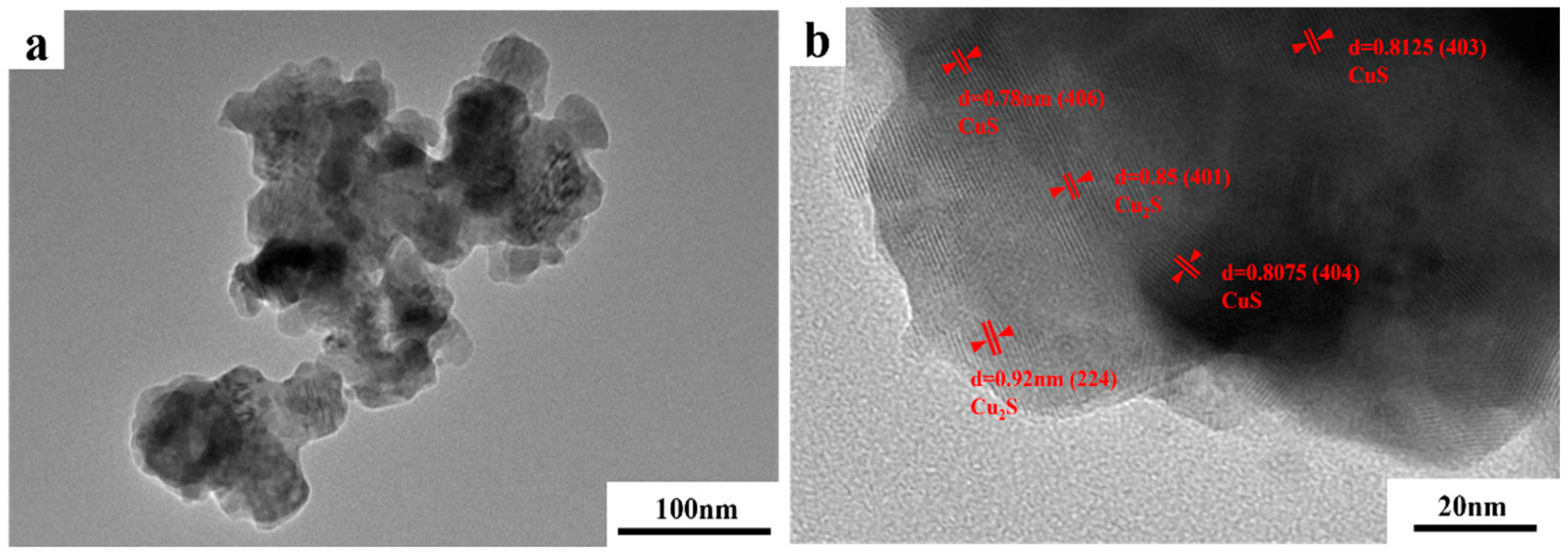

Disclaimer/Publisher’s Note: The statements, opinions and data contained in all publications are solely those of the individual author(s) and contributor(s) and not of MDPI and/or the editor(s). MDPI and/or the editor(s) disclaim responsibility for any injury to people or property resulting from any ideas, methods, instructions or products referred to in the content. |
© 2024 by the authors. Licensee MDPI, Basel, Switzerland. This article is an open access article distributed under the terms and conditions of the Creative Commons Attribution (CC BY) license (https://creativecommons.org/licenses/by/4.0/).
Share and Cite
Tao, Q.; Han, C.; Jing, Q.; Wang, G. Sustainable Recovery of Silver and Copper Photovoltaic Metals from Waste-Conductive Silver Pastes Using Thiosulfate Extraction and Ultraviolet Photolysis. Metals 2024, 14, 730. https://doi.org/10.3390/met14060730
Tao Q, Han C, Jing Q, Wang G. Sustainable Recovery of Silver and Copper Photovoltaic Metals from Waste-Conductive Silver Pastes Using Thiosulfate Extraction and Ultraviolet Photolysis. Metals. 2024; 14(6):730. https://doi.org/10.3390/met14060730
Chicago/Turabian StyleTao, Qing, Chao Han, Qiankun Jing, and Guangxin Wang. 2024. "Sustainable Recovery of Silver and Copper Photovoltaic Metals from Waste-Conductive Silver Pastes Using Thiosulfate Extraction and Ultraviolet Photolysis" Metals 14, no. 6: 730. https://doi.org/10.3390/met14060730
APA StyleTao, Q., Han, C., Jing, Q., & Wang, G. (2024). Sustainable Recovery of Silver and Copper Photovoltaic Metals from Waste-Conductive Silver Pastes Using Thiosulfate Extraction and Ultraviolet Photolysis. Metals, 14(6), 730. https://doi.org/10.3390/met14060730







